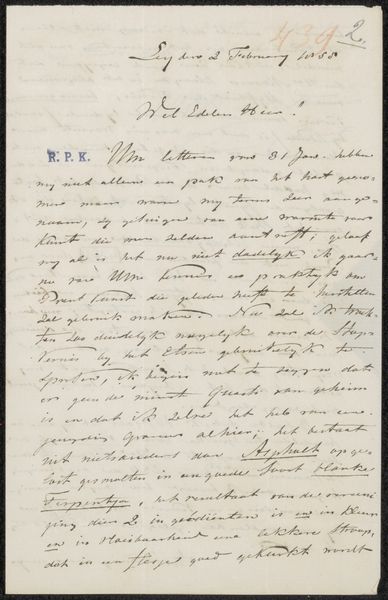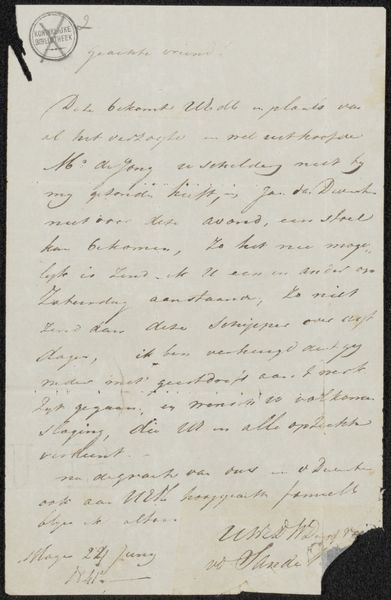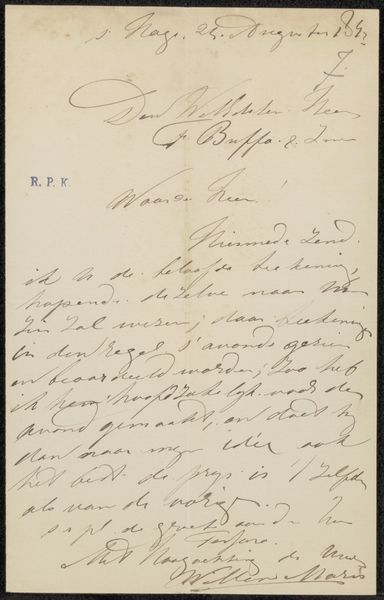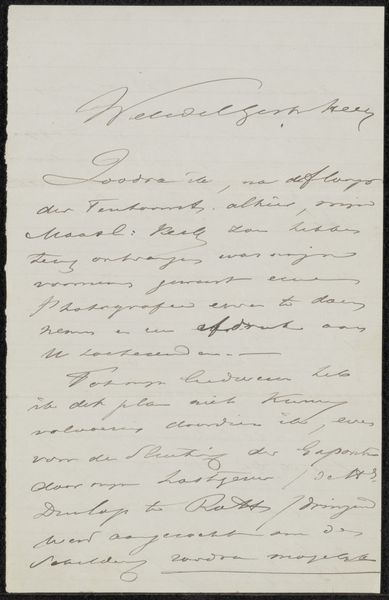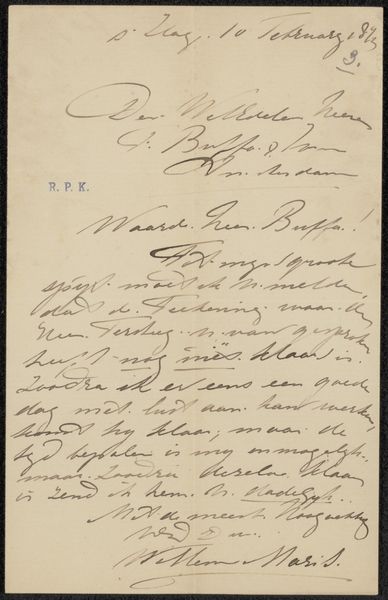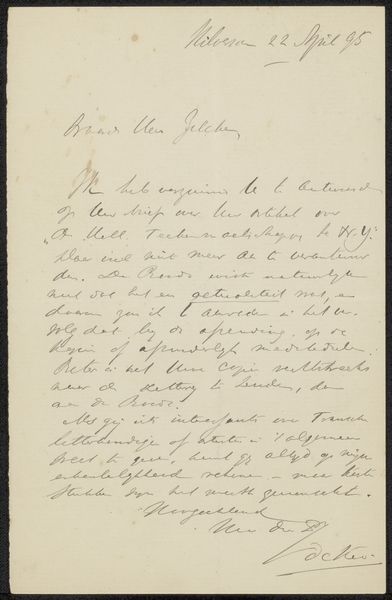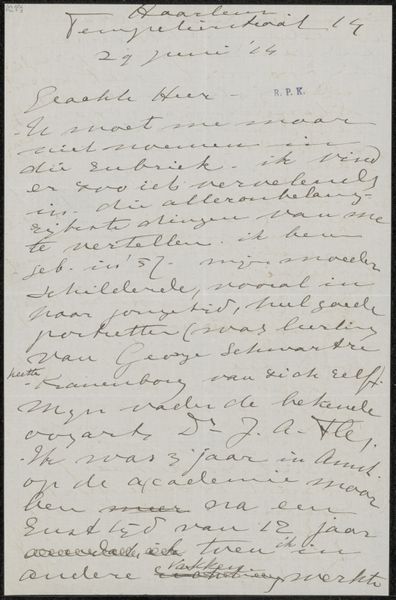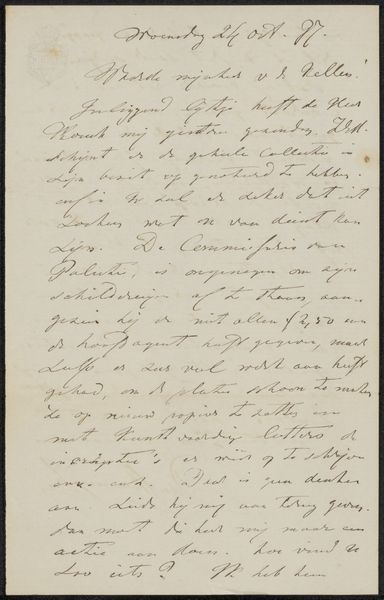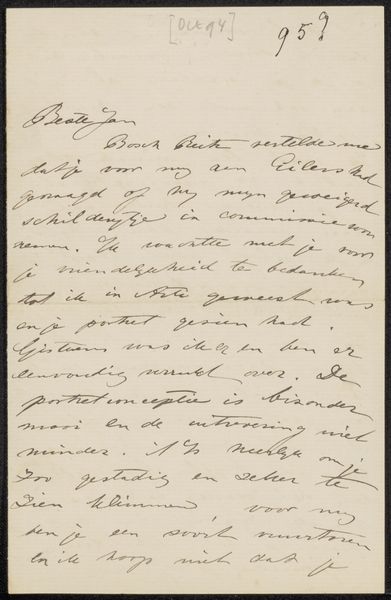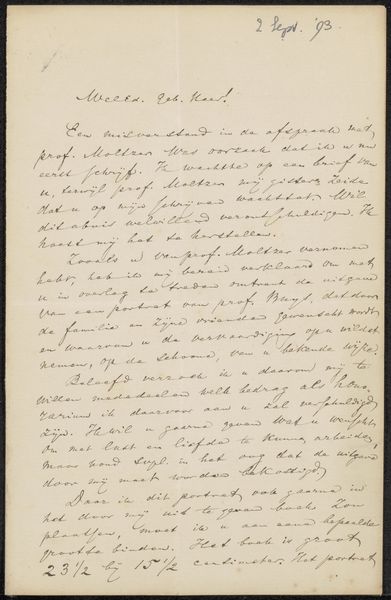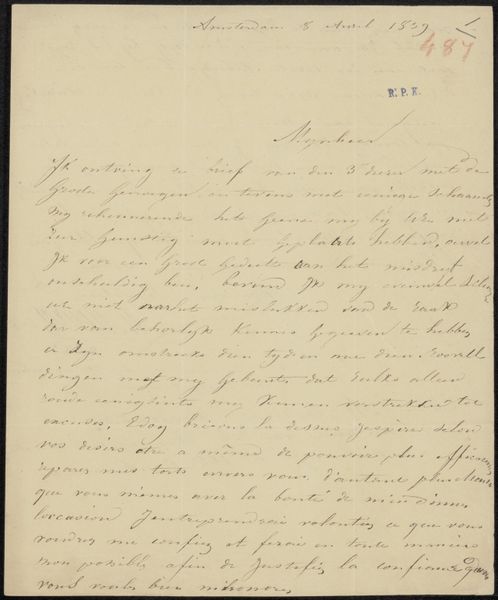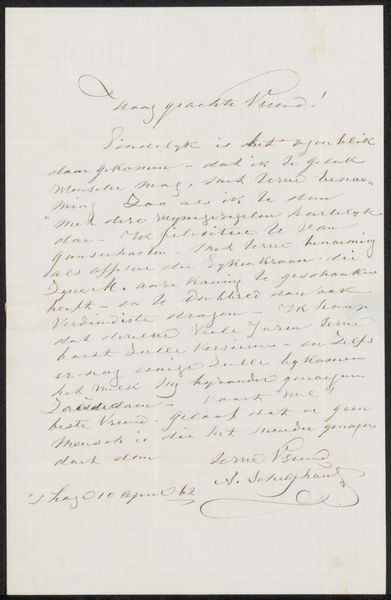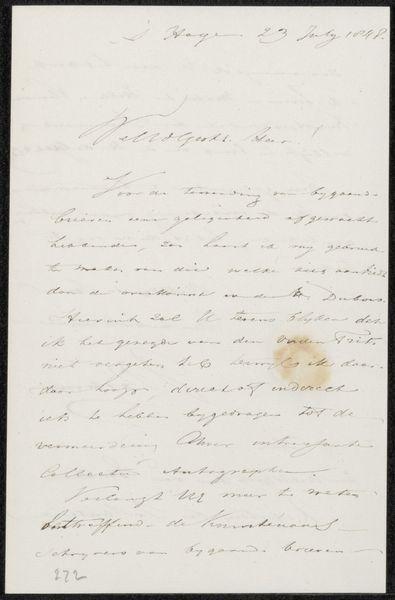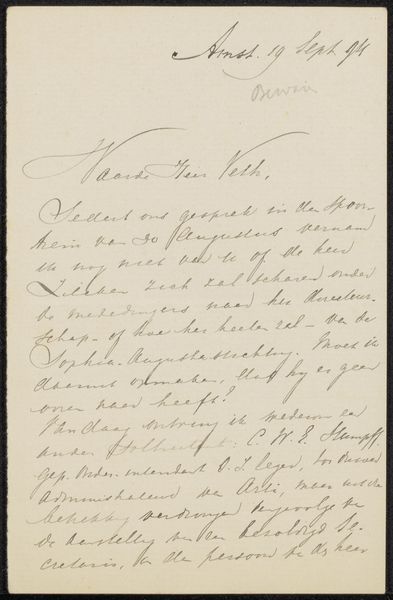
drawing, paper, ink, pen
#
drawing
#
paper
#
ink
#
pen
#
calligraphy
Copyright: Rijks Museum: Open Domain
Editor: Here we have a letter titled "Brief aan Alberto Caramelli," created between 1842 and 1891 by Johannes Hubertus Leonardus de Haas. It's pen, ink, and paper – quite delicate. I'm immediately struck by the cursive handwriting; it feels so personal and connected to a different time. What do you see in this piece? Curator: I see the intersection of private correspondence and public display. The letter itself, originally intended for a single recipient, now resides in a collection. The very act of displaying a personal letter raises questions about the boundaries between private and public spheres, wouldn't you agree? Consider also that De Haas was part of a shifting social and political context. Editor: That's a fascinating point. So, its existence as a displayed object changes its very nature? How does that affect our understanding of the content? Curator: Precisely. Think about who has access to it now and in what context. Who reads this and what power dynamic are we looking at now, in comparison to its origins? Are we honoring or exploiting the author's intention? Moreover, what socio-economic context did Caramelli occupy in order to have relationships with artists, thus requiring such letter and potential drawing? Editor: I hadn't considered those aspects. I was so focused on the artistic skill in the penmanship. It makes me rethink how we view even simple, everyday objects within museum settings. Curator: Exactly. These archives were born to preserve history as dictated by those who could. So many questions to ask of these personal writings and drawings! Editor: I agree. This brief glimpse into this piece and your questions is invaluable. Curator: Indeed. It encourages us to engage with art critically and historically and to investigate our modern-day perceptions.
Comments
No comments
Be the first to comment and join the conversation on the ultimate creative platform.
